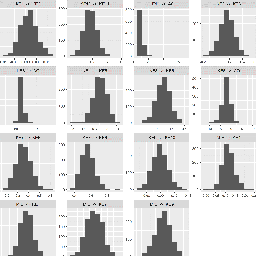Comparison of piecewise structural equation modeling and Bayesian network for de novo construction of a quantitative adverse outcome pathway network
Main Article Content
Abstract
Quantitative adverse outcome pathway network (qAOPN) is gaining momentum due to its predictive nature, alignment with quantitative risk assessment, and great potential as a computational new approach methodology (NAM) to reduce laboratory animal tests. The present work aimed to demonstrate two advanced modeling approaches, piecewise structural equation modeling (PSEM) and Bayesian network (BN), for de novo qAOPN model construction based on routine ecotoxicological data. A previously published AOP network comprised of four linear AOPs linking excessive reactive oxygen species production to mortality in aquatic organisms was employed as a case study. The demonstrative case study intended to answer: Which linear AOP in the network contributed the most to the AO? Can any of the upstream KEs accurately predict the AO? What are the advantages and limitations of PSEM or BN in qAOPN development? The outcomes from the two approaches showed that both PSEM and BN are suitable for constructing a complex qAOPN based on limited experimental data. Besides quantification of response-response relationships, both approaches could identify the most influencing linear AOP in a complex network and evaluate the predictive ability of the AOP, albeit some discrepancies in predictive ability were identified for the two approaches using this specific dataset. The advantages and limitations of the two approaches for qAOPN construction are discussed in detail, and suggestions on optimal workflows of PSEM and BN are provided to guide future qAOPN development.
Article Details

This work is licensed under a Creative Commons Attribution 4.0 International License.
Articles are distributed under the terms of the Creative Commons Attribution 4.0 International license (http://creativecommons.org/licenses/by/4.0/), which permits unrestricted use, distribution and reproduction in any medium, provided the original work is appropriately cited (CC-BY). Copyright on any article in ALTEX is retained by the author(s).
Ankley, G. T., Bennett, R. S., Erickson, R. J. et al. (2010). Adverse outcome pathways: A conceptual framework to support ecotoxicology research and risk assessment. Environ Toxicol Chem 29, 730-741. doi:10.1002/etc.34
Foran, C. M., Rycroft, T., Keisler, J. et al. (2019). A modular approach for assembly of quantitative adverse outcome pathways. ALTEX 36, 353-362. doi:10.14573/altex.1810181
Grace, J. B., Schoolmaster Jr., D. R., Guntenspergen, G. R. et al. (2012). Guidelines for a graph-theoretic implementation of structural equation modeling. Ecosphere 3, art73. doi:10.1890/ES12-00048.1
Grinstead, J., Ortiz-Ramirez, P., Carreto-Guadarrama, X. et al. (2022). Piecewise structural equation modeling of the quantity implicature in child language. Lang Speech, 238309211066086. doi:10.1177/00238309211066086
Jackson-Blake, L., Clayer, F., Haande, S. et al. (2022). Seasonal forecasting of lake water quality and algal bloom risk using a continuous Gaussian Bayesian network. Hydrol Earth Syst Sci Discuss 2022, 1-34. doi:10.5194/hess-2021-621
Kaplan, D. (ed.) (2009). Structural Equation Modeling: Foundations and Extensions. 2nd edition. SAGE Publications, Inc. doi:10.4135/9781452226576
Lefcheck, J. S. (2016). Piecewisesem: Piecewise structural equation modelling in R for ecology, evolution, and systematics. Meth Ecol Evol 7, 573-579. doi:10.1111/2041-210X.12512
Maertens, A., Golden, E., Luechtefeld, T. H. et al. (2022). Probabilistic risk assessment – The keystone for the future of toxicology. ALTEX 39, 3-29. doi:10.14573/altex.2201081
Moe, S. J., Madsen, A. L., Connors, K. A. et al. (2020). Development of a hybrid Bayesian network model for predicting acute fish toxicity using multiple lines of evidence. Environ Modell Softw 126, 104655. doi:10.1016/j.envsoft.2020.104655
Moe, S. J., Carriger, J. F. and Glendell, M. (2021a). Increased use of Bayesian network models has improved environmental risk assessments. Integr Environ Assess Manag 17, 53-61. doi:10.1002/ieam.4369
Moe, S. J., Wolf, R., Xie, L. et al. (2021b). Quantification of an adverse outcome pathway network by Bayesian regression and Bayesian network modeling. Integr Environ Assess Manag 17, 147-164. doi:10.1002/ieam.4348
Perkins, E. J., Ashauer, R., Burgoon, L. et al. (2019). Building and applying quantitative adverse outcome pathway models for chemical hazard and risk assessment. Environ Toxicol Chem 38, 1850-1865. doi:10.1002/etc.4505
Pugesek, B. H., Tomer, A. and von Eye, A. (2003). Structural Equation Modeling: Applications in Ecological and Evolutionary Biology. Cambridge, MA, USA: Cambridge University Press. http://pubs.er.usgs.gov/publication/70006389
Shipley, B. (2000). A new inferential test for path models based on directed acyclic graphs. Structural Equation Modeling 7, 206-218. doi:10.1207/S15328007SEM0702_4
Shipley, B. and Douma, J. C. (2021). Testing piecewise structural equations models in the presence of latent variables and including correlated errors. Structural Equation Modeling 28, 582-589. doi:10.1080/10705511.2020.1871355
Song, Y., Xie, L., Lee, Y. et al. (2020). De novo development of a quantitative adverse outcome pathway (qAOP) network for ultraviolet B (UVB) radiation using targeted laboratory tests and automated data mining. Environ Sci Technol 54, 13147-13156. doi:10.1021/acs.est.0c03794
Song, Y., Kamstra, J. H., Cao, Y. et al. (2021). High-throughput analyses and Bayesian network modeling highlight novel epigenetic adverse outcome pathway networks of DNA methyltransferase inhibitor mediated transgenerational effects. J Hazard Mater 408, 124490. doi:10.1016/j.jhazmat.2020.124490
Spinu, N., Cronin, M. T. D., Enoch, S. J. et al. (2020). Quantitative adverse outcome pathway (qAOP) models for toxicity prediction. Arch Toxicol 94, 1497-1510. doi:10.1007/s00204-020-02774-7
Spinu, N., Cronin, M. T. D., Lao, J. et al. (2022). Probabilistic modelling of developmental neurotoxicity based on a simplified adverse outcome pathway network. Comput Toxicol 21, 100206. doi:10.1016/j.comtox.2021.100206
Stenegren, M., Berg, C., Padilla, C. C. et al. (2017). Piecewise structural equation model (SEM) disentangles the environmental conditions favoring diatom diazotroph associations (DDAS) in the Western Tropical North Atlantic (WTNA). Front Microbiol 8, 810. doi:10.3389/fmicb.2017.00810
Varian, H. (2005). Bootstrap tutorial. Math J 9, 768-775.
Yuan, K.-H. and Bentler, P. M. (1998). Normal theory based test statistics in structural equation modelling. Br J Math Stat Psychol 51, 289-309. doi:10.1111/j.2044-8317.1998.tb00682.x
Zgheib, E., Gao, W., Limonciel, A. et al. (2019). Application of three approaches for quantitative AOP development to renal toxicity. Comput Toxicol 11, 1-13. doi:10.1016/j.comtox.2019.02.001


